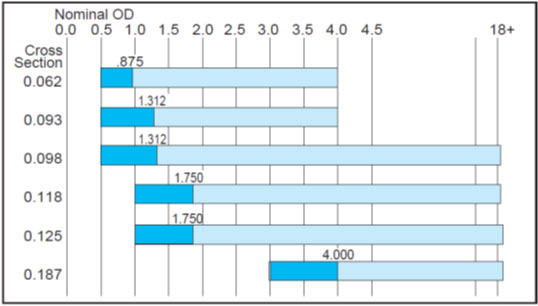Do you know the top maintenance points that you should be checking when performing maintenance on your compressor cylinders and why you should be checking them?
Keep reading to find out the top 6 maintenance tips.
Gas Packing and Packing Cases
The packing is a crucial component because it provides the seal between the piston rod and the cylinder. The packing is made up of a series of cups each of which houses several rings. The intermediate cup is what allows the oil to enter the box through an axial hole. Any gas that has leaked out of the box is able to be recovered and recycled (if there is a low pressure collection system) or could be sent to a flare or other treatment process.
The inspection of the gas packing involves an assessment on whether or not there is a leak. A packing that is properly seated on a rod that is running true should not be exhibiting any leakage. With a periodic subjective inspection of the compressor, you will be able to see indications if the performance of the packing has deteriorated.
Valve Port Inspection
If there is a backflow of gas, it will cause an increase in the temperature of the valve, valve covers and the cylinder body. The increase in temperature could also be caused by prolonged unloaded operation of the cylinders.
Valve ports should be inspected for cracks through the use of a dye penetrant. You should also be checking the seating surface for the valve body for nicks, pitting, or grooving which can prevent the proper sealing of the valve body to the cylinder. If you have a cylinder that uses jam screws to hold the valve in the valve port, any damage done to the seating surface may be corrected by re-facing the seat
Cylinder Taper Tolerance
The taper in the compressor cylinder is what causes the rings to travel in and out of their grooves as the piston is traveling up and down the cylinder.
Cylinder taper is the change in the cylinder diameter versus the length of the bore. You should inspect the cylinders with a micrometer on a periodic basis to determine the taper or the diametrical wear.
Reciprocating Compressor Rod Drop Monitors
Rod drops can be caused by excessive wear of the rider rings, crosshead, or cylinder. Rod drop monitors are protective devices that are able to provide a warning when the compressor rod has dropped beyond an acceptable limit. Rod drop monitors are only intended for use on horizontal or angle cylinders, they are not considered effective on vertical cylinders.
In order for you to have a successful monitoring system, you have to have a proper instrumentation design on the rod drop monitors. You also must have established the confidence in the system prior to the system being used in order for the system to work effectively.
Ring Groove Inspection
The ring grooves in your compressor cylinder should be inspected for wear and breakage on a periodic basis. The side wear that is allowable in ring grooves, which includes tapering, should be limited to the following descriptions of the graph:
Light sections of the chart indicate that installation may be simpler for blind rod glands. As the axial length increases, the complexity that you will face during the installation will also increase. Consult MPI engineering for specific concerns.
Any non-standard cross sections are available upon request. Consult MPI engineering for wear guides smaller than 1” nominal OD.

Recommended Radial Cross Section versus Diameter (Taken from Macrotech Polyseal Inc.)
Rod and Nut Seating Surfaces
The seating surfaces for the rod and piston nut rod should be inspected for signs of wear and galling on a periodic basis. You should inspect the seating surfaces and the adjacent piston face through the use of a dye penetrate to check for any evidence of cracks on the rod and the piston nut rod. The seating surfaces on the piston rod and the piston rod nut should be perpendicular to the piston bore within 0.0005 inch. If your seating surface for the piston rod and the piston rod nut are not at this measurement, then you should be contacting Disco Inc. to get the seating surface to this measurement for your compressor cylinder to work at the most efficient level.
If you find that you are having problems with any of the above components of your compressor cylinder, or any other part of your compressor cylinder, be sure to call us at Disco so that we can get your equipment working as effectively and efficiently as it should be.
And always remember that your safety is the priority before you begin to perform any job.
